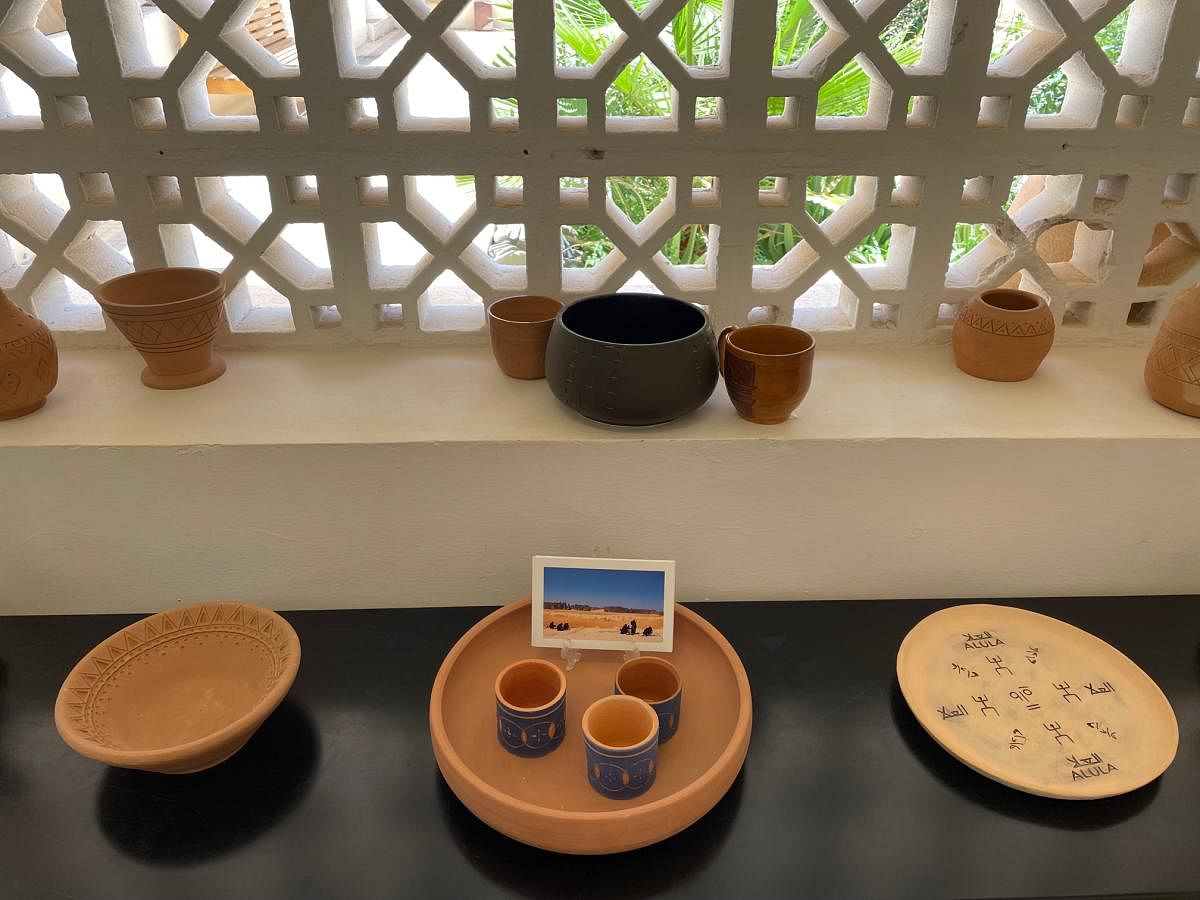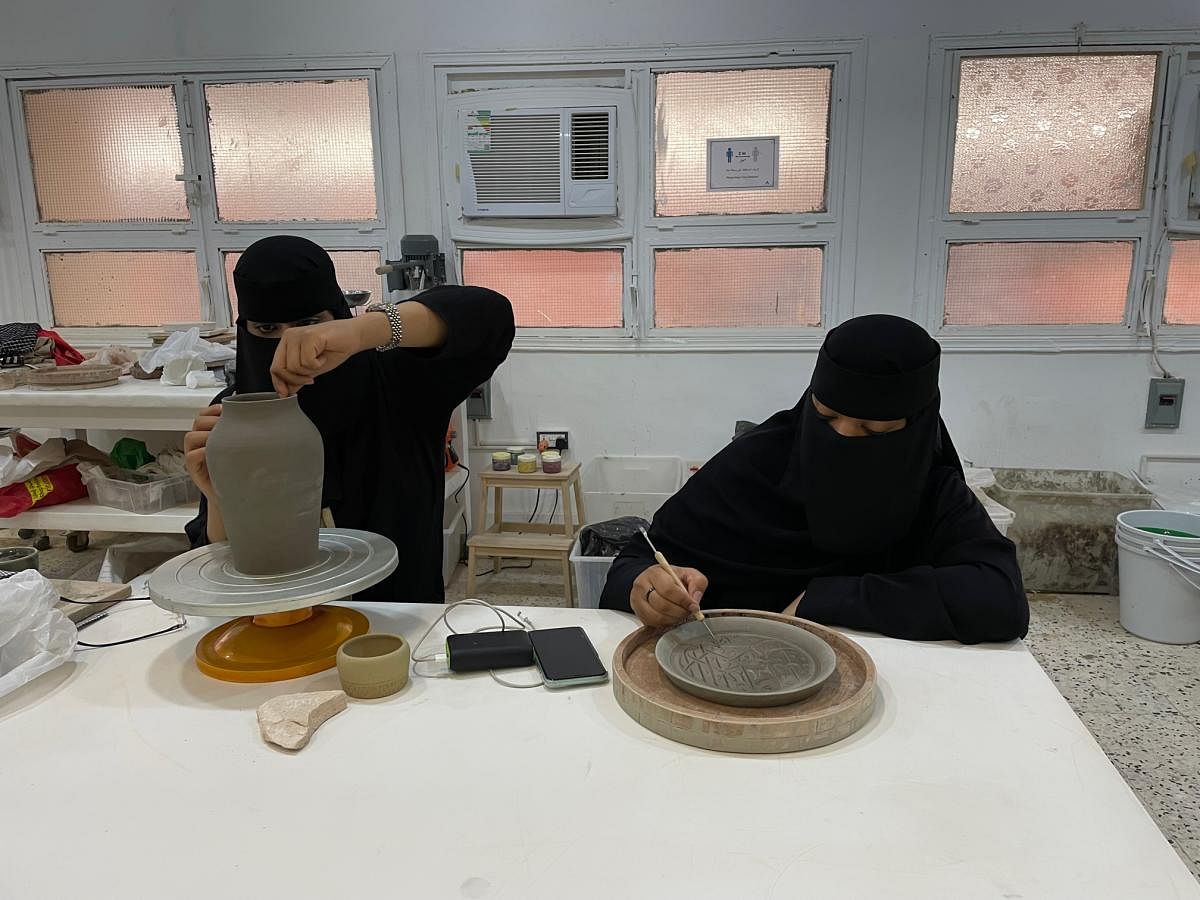

Amid AlUla’s soaring red-rock canyons, a sprawling desert speckled with gigantic boulders and valleys carpeted in delicate wildflowers, nestles Madrasat Addeerah, an art and traditional crafts hub. As I weave my way through the stony bylanes of Saudi Arabia’s stunning heritage city, I’m suddenly greeted by a nondescript structure with a blue door flaunting red curtains. Up a flight of stairs, embellished on either side by hand-painted murals, I enter Addeerah’s serene premises.
In 1964, I’m told, this building was Saudi Arabia’s first girls’ school. It has now been taken over by the Royal Commission for AlUla to run as a thriving art space
since 2019. Dozens of poor local women have been trained and taught here under local and foreign experts to craft beautiful ceramic, jewellery, pottery, wicker
baskets, rugs and more.
In the first room I enter, seven women in black hijabs (head coverings) and abayas (the historically black, floor-length long-sleeved robe worn atop clothing) are bent
intently over sewing machines.
They are busy stitching and embroidering cloth bags and ladies’ handbags. Others sit on chairs embellishing their creations with patterns and motifs, their needles flying in and out of the cloth. The women range in ages from 20s to their 50s. “I made this today,” says Ameena, 58, proudly holding up her creation — a peach-coloured lady's handbag with folk motifs, mirroring the local landscape. To my delight, the bag has details of inscriptions etched into stone at Jabal Ikma, a mountain near the ancient city of Dadan I’d visited just a day before. Referred to as an “open-air library,” Ikma displays thousands of centuries-old inscriptions in Aramaic, Dadanitic, Thamudic, Minaic, and Nabataean carved into the sandstone cliffs soaring 165 feet above ground level.
In the second room, women perched on stools are sculpting pots and bowls from clay, the air suffused with the aroma of AlUla’s earth. The clay, a student informs me, is picked from the desert, processed and then used to create utensils and artwork with creative designs that draw inspiration from AlUla’s architecture and culture.
In the following rooms, I meet women engaged in crafting jewellery from metals like silver and gold. In another section, students are weaving baskets, mats and trays from palm fronds. Addeerah’s reputation is slowly spreading far and wide and its talent is being recognised. Foreign artists come calling while grants from global organisations like Turquoise Mountain Foundation (an NGO established by Prince Charles to protect traditional crafts and historical areas) are further bolstering the centre’s mission. “Our focus is on women’s independence and empowerment, through vocational training in different courses, ranging from a period of 2-3 years. Our artists are learning heritage design principles and geometries, while at the same time evolving techniques to their own artistic sensibilities. Currently, the products made by the students are sold in a small shop in the market in the old town. But there’s interest from foreign buyers too,” Addeerah’s supervisor Hammed informs me.